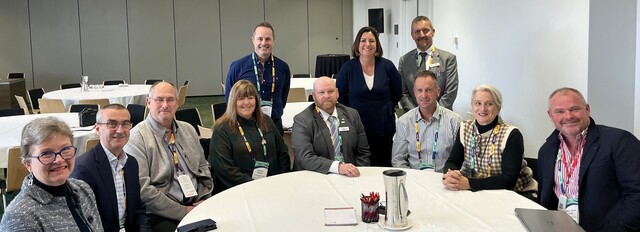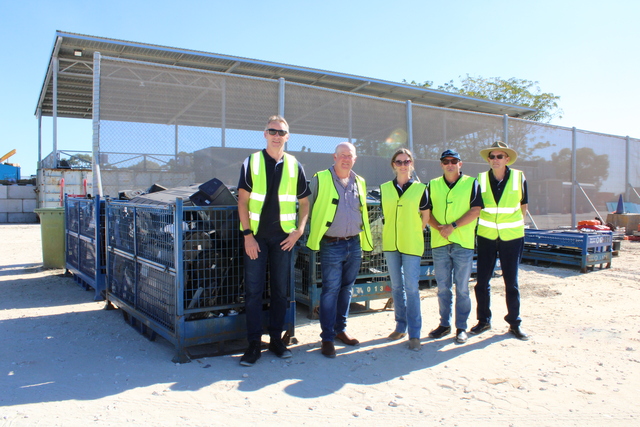The Good Oil by Rod Brown *
We were on the south coast of NSW recently inspecting tourism infrastructure, and there’s a grizzled old bloke paddling in the shallows. He tells us he’s getting some poddy mullet to use as live bait, to catch the big kingfish and jewfish that make Narooma famous.
Bob explains that he cuts a rectangular hole, about 15 cm x 4 cm, in the side of a two litre soft drink bottle, curves the plastic edges inwards, fills it with a handful of Woolworths breadcrumbs, puts in a decent sized sinker, leaves the screw cap on, and then submerges it.
After 15 minutes he wanders back out and returns with the bottle jam packed with 15 cm long mullet. But some days it takes a couple of hours waiting to catch his bait, because mullet are pretty fickle. Bob says that it needs one mullet to pluck up the courage and dive in, then the others immediately follow. And do they cram in – absolutely amazing!
This got me thinking about the investment buoyancy of lifestyle towns and regions, such as Narooma on the Eurobodalla Coast, and noted in the ALGA’s State of the Regions report.
As we’ve reported previously, lifestyle regions have different economic drivers and infrastructure requirements from urban or manufacturing regions. In most cases, lifestyle regions have higher than average unemployment, bleaker employment prospects for school leavers, more social welfare recipients, mostly micro businesses and environmental issues that can easily polarise the community.
As local Councillors are acutely aware, the broadening of the economies of these lifestyle regions is easier said than done. The challenge is to find that first mullet with courage.
This is why the three spheres of government must get into forward looking development agendas to facilitate investment in these regions that is both economically sustainable, that is creating long term rather than transient jobs and environmentally sustainable. Quality infrastructure – mobile phone coverage, Internet speed, university campuses, electricity and water supply, health care, good transport links – is the bait.
But you cannot buy it from Woolworths.
In this regard, the Telstra sale is now a fait accompli and the Howard Government has a once only opportunity to fund some of the required public infrastructure in a planned manner, rather than the confetti mania we saw recently.
US site selectors speak their minds
The International Economic Development Council (Washington DC) recently canvassed the opinions of a panel of site selectors as part of its annual conference. We are some years behind the Americans in this field – so it’s instructive to note how they fish for mullet and bigger species.
Do not send videos and CD ROMs
The No. 1 message was for communities looking to attract investor interest was to ease up on sending promotional videos. One joked about naughty consultants being forced to sit in a room and watch these videos. Same advice applies to CD ROMs. Large packets of information are not popular, either. But print newsletters or brochures, can be stuffed into a briefcase and read on a plane.
Web sites
Most of the site selectors have a strong preference for electronic media. Even though they might delete a community’s e-letter, a well executed email letter with sufficiently intriguing information could prompt them to check out the sender’s web site.
And all the speakers stressed that a good web site is a community’s most important business recruitment tool. The keys to a good web site are speed, ease of navigation and useful data. Given that these consultants may be working from a laptop via a hotel room’s phone line, they do not want to see, when opening up the home page, dancing bubbles or guys fishing that takes 20 minutes to download.
Economic Development Officers need to put their phone numbers on the site – on every page and in a spot that’s easy to find. Another basic aid is a simple map on the front page with major highways and proximities to other locations. Don’t assume we know where you are.
One site selector suggested including names and contact information for individual staffers who deal with specific target industries or tasks, and a news feature highlighting the latest incoming companies or expansions. Your best selling messages are your successes.
Other suggestions
The panel made other suggestions that have a certain resonance in Australia:
- Provide information we can’t get anywhere else, such as a list of the top ten employers, the relevant unions, types of management concepts being used, anecdotes, local incentives, site and building information. And keep it updated!
- ‘Face time’ often made the strongest impression. The communities and states that take time to come and do the call for an hour, and talk to us face to face, have more luck.
- Community familiarisation trips. Sit down with site selectors over a couple of days and explain things. Leave the golf game off the agenda, because they’re only good for golfers, and four hours is a lot of time.
- Ask about the trends and practices affecting the community’s industries and clusters. Having a portfolio of very defined industries makes a major difference.
- Everybody in this room is going after biotech…what’s going to set you apart is your progress with integrating all the resources of the community, whether it’s education, the facilities or whatever, to make a particular industry ring true.
- Follow up on the information already sent.
- Incentives have actually grown in importance. Globalisation has put pressure on companies to find cost efficiencies. Once the company has whittled its list to one or two communities, a package that includes dollar value incentives, with other types of assistance, can help seal the deal.
- The type of incentive to offer varies depending on the company’s growth stage. Startups may not derive much benefit from tax credits so think about minimising uncertainty and helping with up front costs such as training or relocation.
- Some companies might try to ‘shop’ incentives. Those aren’t the companies you want. You need businesses that will stay longer because the community is a good place to operate. Beware of jumping through hoops for ‘hot’ technology companies promising to bring 500 workers to town.
- To make a community stand out, think about putting the swords away and working with your neighbours. It also helps us sort through a project.
- Get the fundamentals right. Have all the key players – the utility, the president of the college, the mayor and other leaders – in the room to show that they’ve talked to each other more than once before.
Next month we’ll discuss how you find the site selectors in Australia. They’re not that obvious.
* Rod Brown’s Canberra based consultancy group, Australian Project Developments Pty Ltd, specialises in industry/regional development and government liaison. For further information telephone (02) 6231 7261 or email apd@orac.net.au







